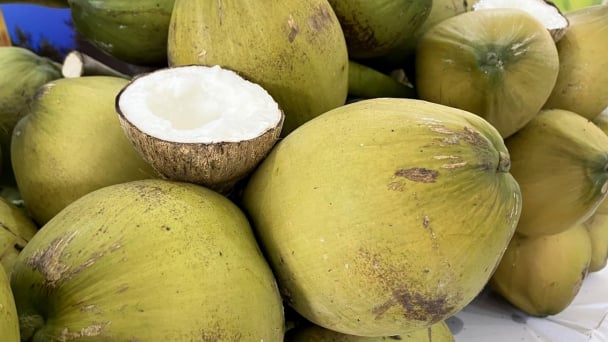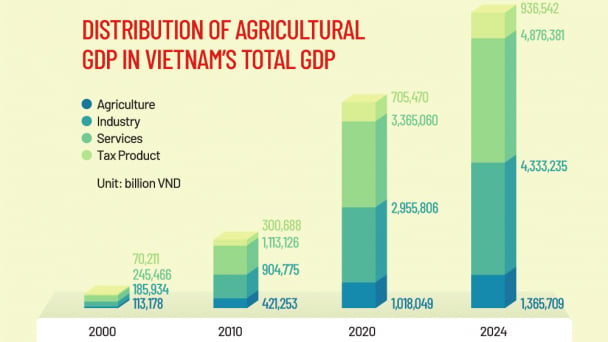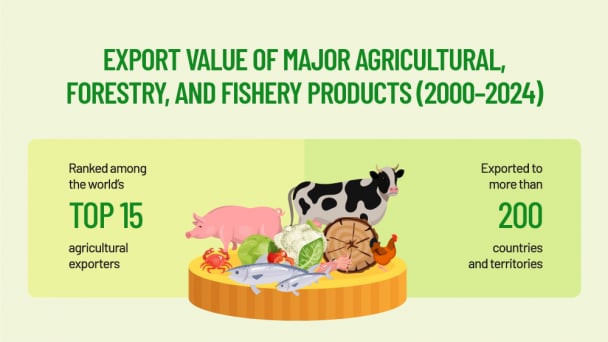September 10, 2025 | 10:13 GMT +7
September 10, 2025 | 10:13 GMT +7
Hotline: 0913.378.918
September 10, 2025 | 10:13 GMT +7
Hotline: 0913.378.918
For a long period in the 1990s, Japan was Vietnam’s top export market. However, by 2002, the United States made a breakthrough. With an export turnover of approximately 2.3 billion USD, the North American country surpassed China and then Japan to claim the leading position.
The foundation for this development came in 1995, when Vietnam and the United States officially normalized relations. From a trade volume of only a few hundred million USD, in the 2000s, when the US - Vietnam Bilateral Trade Agreement (BTA) was signed, Vietnam's exports to the US increased arithmetically, then exponentially.

Wood is a key export commodity from Vietnam to the United States. Photo: Viforest.
Starting from the milestone in 2002, when the United States became the top destination for Vietnamese goods, export figures have continuously set new records. In 2006, exports to the United States reached 8.5 billion USD, and by 2014, it reached 30.6 billion USD, 13 times higher, with a growth of over 150% compared to 1995.
Along with the expansion of the economy, Vietnam-U.S. trade has increasingly developed. In 2021, for the first time, two-way trade exceeded 100 billion USD. By 2024, trade between the two countries reached approximately 134 billion USD, with Vietnam exporting goods worth 119.5 billion USD, accounting for about 30% of the total export turnover.
The Ministry of Industry and Trade has stated that in 2024, there were 15 product categories that achieved export values of over 1 billion USD. Among them, three key categories dominated: computers and components with 23.2 billion USD (19.4%), machinery and equipment with 22 billion USD (18.5%), and textiles and garments with 16.2 billion USD (13.5%).
The next three products also had relatively high values compared to the rest: mobile phones with 9.8 billion USD, wood and wood products with over 9 billion USD, and footwear with 8.3 billion USD.
The United States is also Vietnam's leading market for agricultural products. Specifically, exports of cashew nuts reached 1.15 billion USD, coffee recorded 322.83 million USD, while seafood and fruits and vegetables reached 1.83 billion USD and 360.41 million USD, respectively.
Looking back at the past 10 years (2014 - 2024), Vietnam's export growth to the United States seems limitless. In 2014, Vietnam's exports to the U.S. were approximately 28.7 billion USD. By 2024, this figure had increased about four times, reaching 119.5 billion USD.
In 2014, the trade surplus between Vietnam and the U.S. was only about 22.4 billion USD, but by 2024, the surplus had increased by about four times, reaching 104.6 billion USD.
Contributing significantly to this surge are five main products. These include: computers, electronics, and components, which saw an export growth of 1,450% over 10 years, from 1.6 billion USD in 2014 to 23.2 billion USD in the most recent year.
Next is footwear, which grew by approximately 600%, from 3.8 billion USD in 2014 to 22.9 billion USD in 2024. Machinery, equipment, tools, and parts also increased by nearly 500%, from 4.5 billion USD to 22 billion USD. Wood and wood products increased by nearly 400%, from 2.3 billion USD to 9.06 billion USD.
Although the growth in textiles and garments was relatively smaller, around 65%, the export value of this sector to the U.S. remained extremely high. In 2014, textiles and garments exported about 9.8 billion USD, and by 2024, this figure had continued to rise to 16.15 billion USD.
Since 2019, during President Donald Trump's first term, the United States has put Vietnam on the list of countries that need to adjust their tax policies.
Through discussions with US partners, the Ministry of Industry and Trade has found that the United States considers Vietnam to have a non-market economy model and operation method. Some specific economic and trade interests of the United States have not really been given attention and thoroughly handled.
"The United States has long recognized that the trade deficit is not an issue that can be resolved overnight, although this is an issue that President Donald Trump is particularly interested in," said a representative of the Import and Export Department (Ministry of Industry and Trade).
One of the strategic priorities of the United States with potential partner countries to realize the Indo-Pacific Strategy is to focus on cooperation in developing the digital economy and expanding access to the service market. This is an area where the United States has strengths with many businesses capable and capable of providing solutions and services on the Internet platform and wants to promote through bilateral negotiations.
However, Vietnam's regulations in this area have not been systematically and synchronously developed. Problems are likely to arise due to different understandings and the lack of satisfactory solutions.
Translated by Kieu Chi
/2025/09/09/0151-3-115633_157.jpg)
(VAN) This shipment of ASF vaccine is expected to arrive in the Philippines today (September 9) and will be received by local enterprises along with livestock and veterinary authorities.

(VAN) During the first half of 2025, Moldova exported nearly 11 million eggs to the European Union. This compares to only 9,000 eggs during the same period in 2024, as estimated by the government.

(VAN) Exports of four key product groups in the coconut industry reached over USD 520 million in the first six months of 2025, up more than 20% compared to the same period in 2024.

(VAN) The share of agricultural GDP has continued to play an important role in Vietnam’s overall GDP, reflecting the trend toward sustainable economic growth.

(VAN) Vietnam’s export value of agricultural, forestry, and fishery products grew strongly between 2000 and 2024, affirming its position among the world’s top 15 agricultural exporters.
/2025/09/05/2431-2-102010_727.jpg)
(VAN) Vietnam has agreed to establish a joint working group aimed at removing barriers and facilitating deeper penetration of Vietnamese agricultural products into the trillion-dollar Halal market.

(VAN) The EU is a leading market, yet Vietnamese seafood accounts for only 3% of the region’s total imports. The potential remains vast.